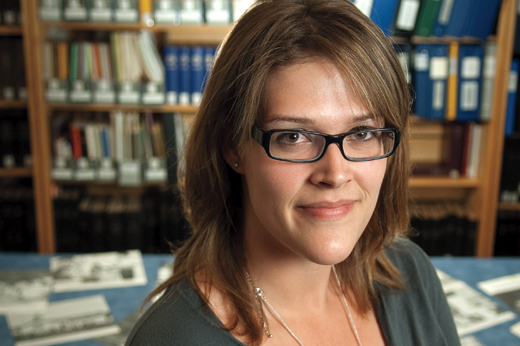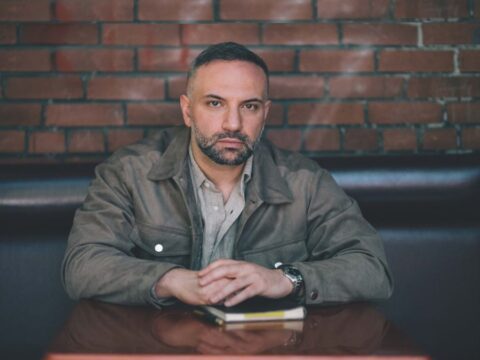Rick Lightning was about 10 years old when he learned that his uncle, David Lightning, had died as a boy at the Red Deer Indian Industrial School. Rick’s father, Albert Lightning, told his son about being called in from the fields to hear the news. “These boys had died and they put them in a hole, and the others were sent back to the fields to work. It was a very painful and traumatic thing,” says Rick.
From 1893 to 1919, about 340 First Nations and Métis students attended the Methodist-run school near Red Deer, Alta., going to classes and working on a quarter section of farmland. Six-year-old David Lightning was among five students who died there during a Spanish influenza epidemic in 1918. He is also one of the children whose lives and deaths in residential schools are being researched and remembered as the Truth and Reconciliation Commission (TRC) begins its work in earnest.
You may unsubscribe from any of our newsletters at any time.
Finding the names and gravesites of children who died at the schools is one of the tasks of the five-year commission, created as part of the settlement of lawsuits by residential school survivors against school operators including The United Church of Canada, other church groups and the federal government. At United Church central and Conference archives, a contract researcher and staff archivists have been poring over photos and documents for more than a year. Researchers believe a complete list is unlikely, but school survivors and relatives of dead students say it’s important.
“Everyone needs to have closure of some kind, from the spiritual side as well as the physical side,” says Rick Lightning, a mental health worker in Hobbema, Alta., and a residential school survivor himself. “In our culture, it’s a matter of recognizing these people were really human beings and they did walk on this earth.”
An estimated 100,000 Aboriginal students attended about 130 residential schools over more than a century. Roman Catholic groups operated the majority of the schools, while Anglicans ran about a quarter. Presbyterians and the United Church (which took responsibility for Methodist schools, including the one the Lightning brothers attended, after church union in 1925) ran fewer than a fifth.
Records of residential school attendance are elusive, partly because many federal government files were recycled during paper drives in the Second World War. Finding the names of those who died at school is equally problematic. The TRC’s director of research, Trent University historian and author John Milloy, says people are looking for relatives “with the assumption that some of that stuff is in the records. And in some cases it probably is, and in others it is not. These people are disappeared.”
The Red Deer Indian Industrial School’s crowded and often unhealthy living conditions are well documented, and historical research shows at least 45 students died there of tuberculosis and other infectious diseases. Some were buried in a graveyard on school land, but it faded from public view after the property was sold and buildings demolished.
Then about five years ago, after hosting a series of evening workshops with an Aboriginal couple from Hobbema, Red Deer’s Sunnybrook United heard from a Hobbema family searching for the school’s graveyard. A Sunnybrook adherent and local history buff knew about the site, and a congregational committee was formed to try to protect it.
Since then, the committee has developed a good rapport with the land’s private owners and also intervened when would-be land developers expressed interest. Sunnybrook’s minister, Rev. Linda Ervin, and committee member Lyle Keewatin Richards were on hand to conduct prayers and smudging as archeologists determined the site included at least 27 graves. There could be as many as 65.
Last year, working with Alberta and Northwest Conference and General Council staff, the Sunnybrook committee began contacting the seven First Nations in Alberta and one in Manitoba that, along with the Métis Nation, sent students to the school. Thirty representatives from the students’ home communities met in Red Deer last fall and visited the graveyard before deciding what to do next.
“There was unanimous agreement,” says Don Hepburn, a committee member from Sunnybrook United, “that we need to have a pipe ceremony and we need to have a feast” — rituals intended to free and feed the spirits of the children. The First Nations and Métis also wanted to give the landowners a gift to express their gratitude for keeping the site safe.
On June 30, a date when children would typically return home from residential schools, relatives of former students at the school were invited to take part in a morning pipe ceremony at the actual gravesite, followed by afternoon ceremonies and a feast at a nearby Red Deer park. The event was expected to attract as many as 1,000 people, including TRC commissioners. As well as paying the $20,000 in travel expenses for meetings related to the cemetery, the United Church’s General Council contributed $12,000 to the feast.
“When people die in a traumatic situation, in our belief their spirit doesn’t get to go right away,” says Rick Lightning. He hopes the rituals will help that happen and also connect people with lost family members. “My brother’s children are my children as well,” he says, so the dead children would not be seen as great uncles or great aunts but as grandparents.
“With my children,” Lightning adds, “I would tell them the best I could, ‘This is David. This is your grandfather and he died here.’ So the memory of this child carries on and he is not forgotten. Because these are forgotten children.”
As the United Church and other denominations search their archives, memories of more children may be revived. The United Church has contracted researcher Susan Roy part time to examine its residential school records, and church archivist Nichole Vonk has amassed boxes of documents that stretch more than 100 linear metres. There are also about 600 photos, which were to be scanned and posted to a website in time for the TRC’s first national event last month, a four-day mix of sacred ceremonies and festive activities held in a Winnipeg park.
As the TRC event approached, Roy concentrated on records of the United Church’s Manitoba residential schools — Brandon, Norway House and Portage la Prairie — in national and Conference archives. As with other schools, she found no direct records of student deaths.
“Archives are interesting because they’re a collection of what winds up there. So it’s quite random,” says Roy. The United Church archives have “a kind of silence” on student deaths, she observes, but contain other, more subtle “gems.”
Roy has seen petitions from parents wanting their children returned home, complaints about school conditions from parents and teachers alike, and requests from Aboriginal communities wanting residential schools nearby.
The archives show little evidence of debate around the schools’ agenda to “educate, assimilate and Christianize” their students, Roy says. But discussion over the most effective methods — residential versus day school, for example — was constant.
Roy will write a history of each school plus reports on themes such as child labour. The original archives will be digitally copied by the TRC as part of a national research centre on residential schools.
For TRC research director John Milloy, that research centre — either an actual place or a digital site accessible by computer — should contain not only church and government records on residential schools, but also documents relating to the settlement of the lawsuits against them.
The United Church has always declared its residential school archives open to all and recently signed a waiver giving the TRC access to documentation submitted to the courts during residential school lawsuits. Earlier this year, however, Milloy publicly criticized some churches and church organizations for not making their archives available. He admits he was frustrated shortly after joining the commission. While visiting one archive, he was told he couldn’t see some documents but only a spreadsheet outlining their contents. “It was lists of dead children. We had to see that.”
He now says he and church representatives “blew off some steam” in the media but went on to form a good working relationship.
From the United Church, Milloy may encounter some reluctance in handing over more documents on discussions around the settlement of the lawsuits. However, says General Council’s residential school staffperson Rev. James Scott, it’s simply a matter of determining what’s relevant. “This isn’t people dragging their feet, this is people trying to figure out what it means.”
As well as assembling a TRC archive, Milloy plans to uses his $1.5 million budget to comb archives for names of missing children and locations of graveyards, which will then be scanned by archeologists using ground-proofing X-ray equipment. He does not expect to find evidence that up to 50,000 students were deliberately killed at the schools, a claim often repeated by the headline-grabbing documentary filmmaker Kevin Annett, a former United Church minister.
As a historian, says Milloy, “I really would like to see the smoking gun. . . . But the fact is that’s not what the system was all about or how it was operated. That’s silly, really. You can talk about neglect. But genocide? That’s a bit nervous-making.”
Questions still hover over the Red Deer industrial school and its graveyard. Albert Lightning, for example, remembers his brother David being buried near the school, but correspondence from the school principal at the time says a local undertaker buried David and three other student influenza victims in a cemetery in Red Deer.
But if details like this remain obscure, the effects of residential schools are clearly visible. “I work as a therapist,” says Rick Lightning, “and I see what they call ‘downhill crisis.’ It’s what happens when these children came home and had children but never had any parenting skills.” They suffered “post-traumatic stress,” he says, “and a lot of it was hidden by alcoholism.”
For him, the payoff will come when First Nations people can reclaim their lost children, and non-Aboriginal Canadians can recognize their country’s less-than-pristine past. As a descendant of one of the dead students and chair of the Red Deer event’s organizing committee, Lightning had high hopes for last month’s ceremonies and feast.
“I heard a lot of non-Indians, I would say white people, want to come out with their families because they want their children to know these places happened,” he says. “I was really surprised. A lot of non-Indians are interested in coming there to support us. I was surprised, but I was very happy.”
For more information, go to the United Church of Canada’s residential school website.
This story originally appeared in the July 2010 issue of The Observer with the title “The forgotten children.”













